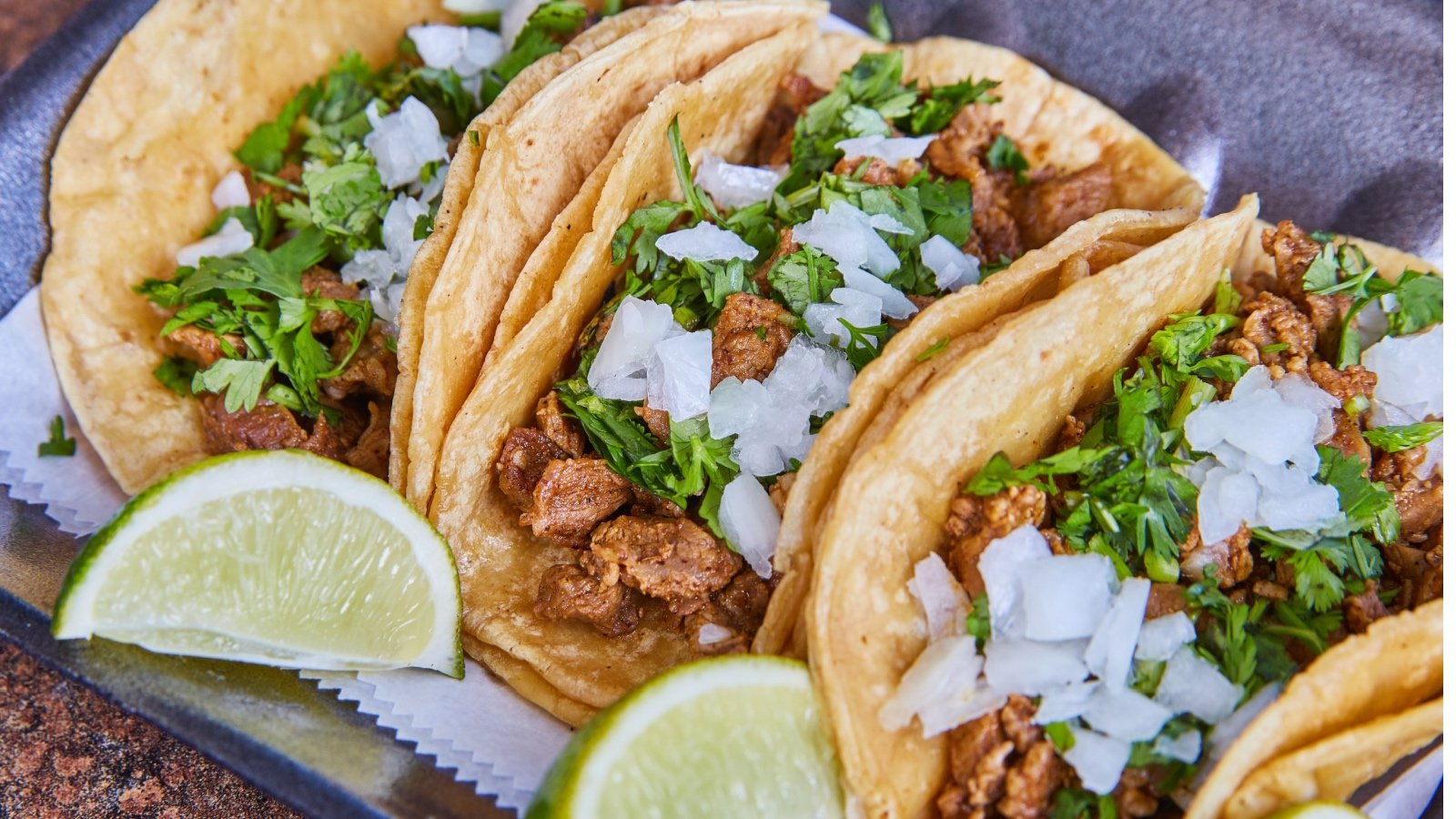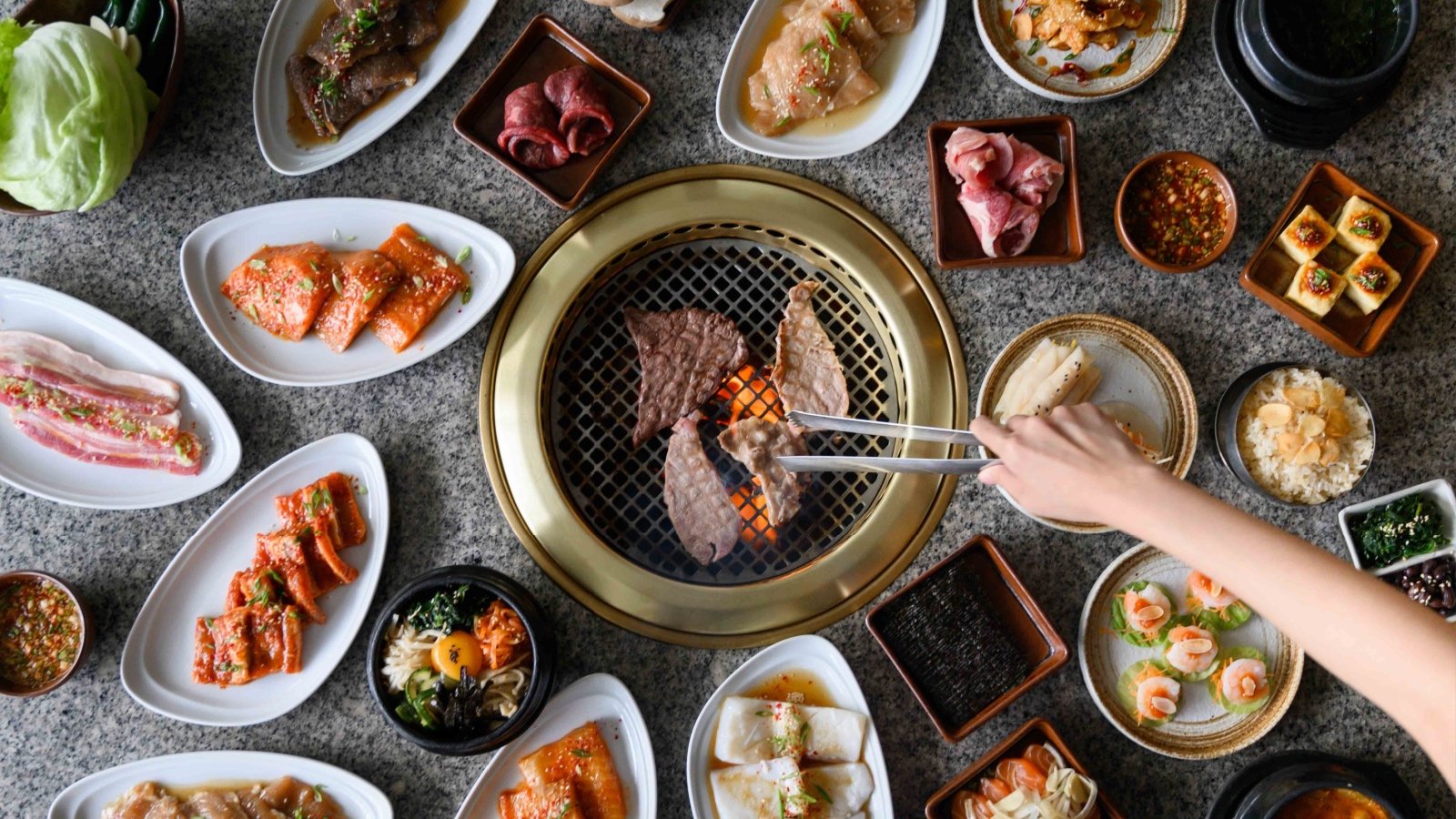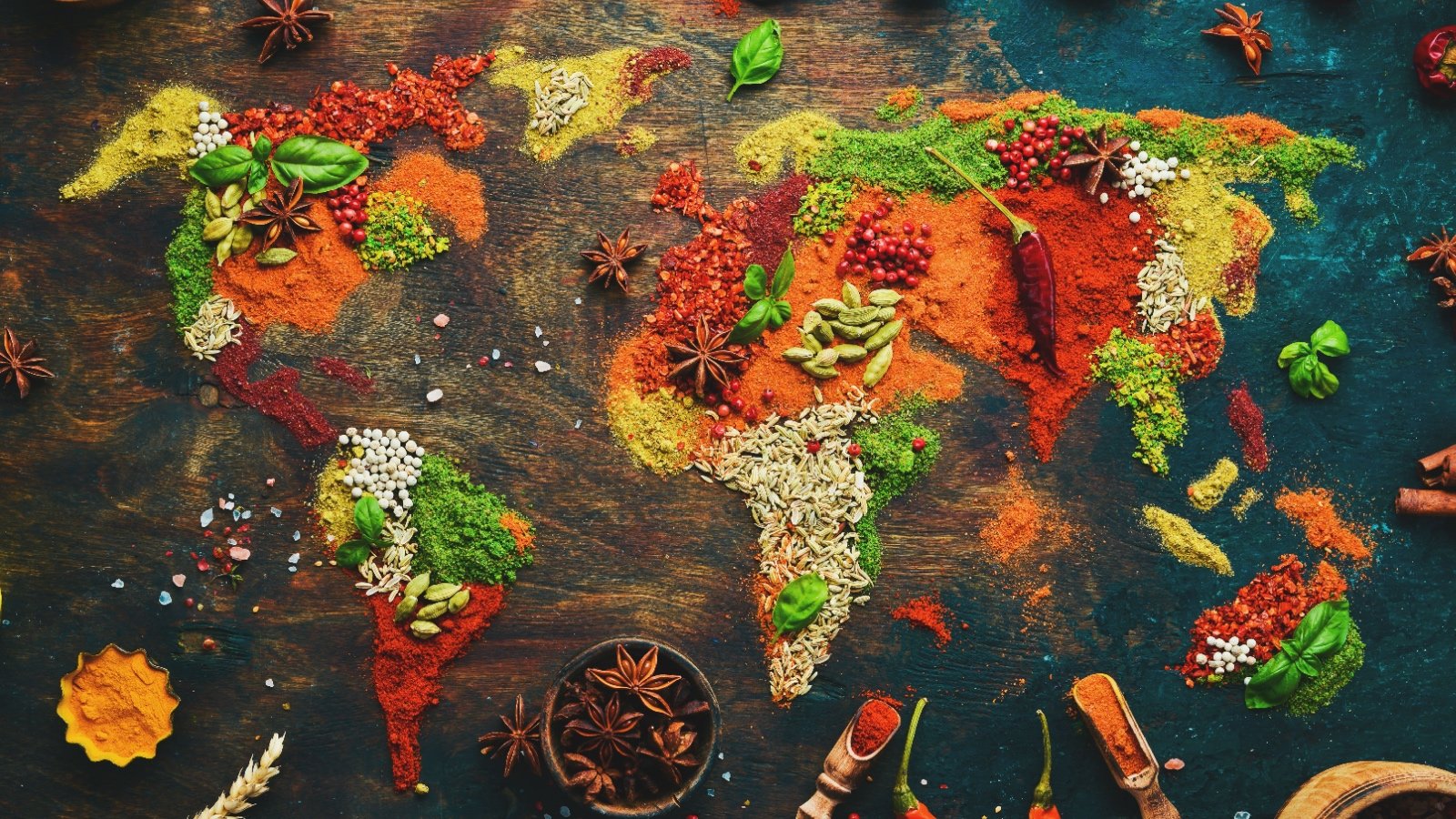Culinary traditions around the world offer a glimpse into each culture they represent; their flavors bring people together.
Some of the world’s best cuisines are as diverse as they are delicious. These cuisines are known to reflect centuries of history, geography, and cultural exchange.
Let’s explore the countries with the most celebrated and influential cuisines that have captivated taste buds on a global level.
Italy

Italy is renowned for its diverse culinary heritage, with each region offering its own unique flavors and dishes. From the creamy pasta of Rome to the fresh seafood of Sicily, Italian cuisine is a celebration of simple, high-quality ingredients. The global popularity of dishes like pizza, pasta, and gelato reflects Italy’s profound influence on the world’s culinary landscape.
Japan

Japanese cuisine is a harmonious blend of tradition, precision, and seasonal ingredients. Sushi and sashimi are globally beloved, but Japan’s culinary repertoire also includes the comforting warmth of ramen, the delicate art of tempura, and the satisfying umami of miso soup. The emphasis on presentation and the balance of flavors make Japanese cuisine a sensory experience that is both refined and deeply satisfying.
France

France is often considered the birthplace of modern gastronomy, with its cuisine setting the standard for culinary excellence worldwide. Known for buttery croissants and delicate pastries, flavorful sauces, and perfectly cooked meats, French food is synonymous with elegance and indulgence. The country’s diverse regions, from Provence to Normandy, each contribute distinct ingredients and techniques to the nation’s celebrated culinary tradition.
Mexico

Mexican cuisine is a vibrant fusion of indigenous ingredients and Spanish influences, known for its bold flavors and colorful presentations. Tacos, enchiladas, and guacamole are just the tip of the iceberg in a cuisine that also includes complex dishes like mole poblano and tamales. The use of fresh herbs, spices, and chiles gives Mexican food its distinctive and unforgettable taste.
Thailand

Thai cuisine is famous for its balance of sweet, sour, salty, and spicy flavors, often achieved through the use of fresh herbs and ingredients like lemongrass, ginger, and coconut milk. Dishes like pad thai, green curry, and tom yum soup have gained international acclaim for their complexity and depth of flavor. Street food in Thailand, from satay skewers to mango sticky rice, also plays a significant role in the country’s culinary culture.
China

Chinese cuisine is incredibly diverse, reflecting the vastness of the country and its many regional specialties. From the fiery spices of Sichuan to the delicate dim sum of Cantonese cooking, Chinese food offers a wide array of flavors and textures. The importance of balance in Chinese cuisine, whether through the use of yin and yang in ingredients or the harmony of colors and textures, is a testament to its culinary sophistication.
India

Indian cuisine is a tapestry of regional dishes, each with its own unique spice blends and cooking techniques. The creamy curries of the north and the lighter, coconut-based dishes of the south are known for their robust and aromatic flavors. The widespread use of spices like cumin, turmeric, and coriander gives Indian cuisine its distinctive and tantalizing character.
Greece

Greek cuisine is a Mediterranean delight known for its emphasis on fresh vegetables, olive oil, and grilled meats. Dishes like moussaka, souvlaki, and tzatziki showcase the simplicity and flavor that define Greek cooking. The tradition of sharing food, often in the form of mezze, reflects the communal and festive nature of Greek dining.
Spain

Spanish cuisine is a celebration of regional diversity, with each area of the country offering its own culinary treasures. Tapas, paella, and jamón ibérico are some of Spain’s most famous contributions to global cuisine, known for their flavors and vibrant presentations. The Mediterranean diet, deeply rooted in Spanish cooking, emphasizes fresh produce, seafood, and olive oil, contributing to the country’s reputation for healthy and delicious food.
Lebanon

Lebanese cuisine is a flavorful blend of Middle Eastern and Mediterranean influences, known for its use of fresh ingredients and aromatic spices. Dishes like hummus, tabbouleh, and kebabs are staples of Lebanese dining, often served as part of a mezze spread. The emphasis on fresh vegetables, grains, and legumes makes Lebanese cuisine both healthy and satisfying.
Vietnam

Vietnamese cuisine is characterized by its light, fresh flavors and the prominent use of herbs and vegetables. Pho, a fragrant noodle soup, and banh mi, a French-inspired sandwich, are among the most popular Vietnamese dishes globally. The balance of flavors, particularly the combination of sweet, sour, salty, and spicy, is central to Vietnamese cooking, making it both refreshing and complex.
Morocco

Moroccan cuisine is a blend of Berber, Arabic, and French influences, known for its use of spices like cinnamon, saffron, and cumin. Tagine, a slow-cooked stew, and couscous, a steamed semolina dish, are iconic staples of Moroccan dining. The practice of combining sweet and savory flavors, such as in lamb with prunes or chicken with preserved lemons, adds a unique depth to Moroccan dishes.
Turkey

Turkish cuisine is a diverse and flavorful tradition that bridges the culinary worlds of Europe and Asia. Dishes like kebabs, baklava, and mezes are central to Turkish dining, reflecting the country’s history and cultural exchanges. The use of fresh herbs, spices, and yogurt gives Turkish food its distinctive taste, making it one of the world’s most beloved cuisines.
Peru

Peruvian cuisine is a fusion of indigenous, Spanish, African, and Asian influences, making it one of the most diverse and exciting in the world. Ceviche, a dish of marinated raw fish, and lomo saltado, a stir-fry with beef and vegetables, are among Peru’s most famous dishes. The use of native ingredients like quinoa, potatoes, and aji peppers highlights the country’s agricultural heritage.
Brazil

Brazilian cuisine is as diverse as its culture, blending indigenous, African, and Portuguese influences. Feijoada, a hearty black bean stew with pork, is the national dish, often enjoyed with rice, collard greens, and farofa (toasted cassava flour). Brazilian barbecue, or churrasco, is also famous worldwide for its perfectly grilled meats and vibrant flavors.
Korea

Korean cuisine is distinguished by its bold flavors, fermented ingredients, and communal style of dining. Kimchi, a spicy fermented cabbage, is a staple in every Korean meal, alongside dishes like bibimbap and bulgogi. The art of fermentation, particularly in kimchi and sauces like gochujang, gives Korean food its unique and powerful taste.
Ethiopia

Ethiopian cuisine is a unique and flavorful tradition centered around injera, a spongy flatbread used to scoop up spiced stews and vegetables. Dishes like doro wat (spicy chicken stew) and misir wat (spiced lentils) are staples of Ethiopian dining, often served on a large communal platter. The use of berbere spice mix, which includes chili peppers, garlic, and ginger, gives Ethiopian food its distinctive heat and depth.
Malaysia

Malaysian cuisine is a melting pot of Malay, Chinese, Indian, and indigenous flavors, known for its diverse food culture. Nasi lemak, a fragrant rice dish cooked in coconut milk, and laksa, a spicy noodle soup, are among Malaysia’s most iconic dishes. The blend of spices, coconut, and fresh herbs creates a vibrant and aromatic cuisine that is both complex and satisfying.
Argentina

Argentine cuisine is deeply rooted in the country’s agricultural traditions, with beef playing a central role in many dishes. Asado, an Argentine barbecue, is a culinary ritual that brings people together over perfectly grilled meats. Empanadas, stuffed pastries filled with beef, chicken, or cheese, are also a beloved staple of Argentine cuisine, reflecting the country’s blend of Spanish and indigenous influences.
Indonesia

Indonesian cuisine is a diverse and vibrant tradition influenced by the country’s thousands of islands and their unique cultures. Nasi goreng, a flavorful fried rice dish, and satay, skewered and grilled meat served with peanut sauce, are among Indonesia’s most famous culinary exports. The use of bold spices, coconut milk, and fresh herbs gives Indonesian food its complex flavors.
Israel

Israeli cuisine is a reflection of the country’s diverse population, blending Middle Eastern, Mediterranean, and Eastern European influences. Dishes like falafel, hummus, and shakshuka have become global favorites, known for their fresh ingredients and robust flavors. The emphasis on fresh vegetables, grains, and legumes makes Israeli cuisine both healthy and delicious, offering a taste of the region’s culinary heritage.









Grundsätzlich erhalten Sie bei der ersten Registrierung auf der Seite einen Willkommensbonus casino, dessen Höhe hauptsächlich von der Höhe Ihrer ersten Einzahlung
abhängt. In den meisten Fällen müssen Sie etwa den 30-fachen Wert
des Bonus spielen, aber einige online Casinos verlangen manchmal bis zum
50-fachen des Einsatzes oder mehr. Viele Spieler fragen sich – wie soll ich die
beste online casino option auswählen, um das Beste aus dem
Bonus ohne Einzahlung herauszuholen? Der Bonus hat häufig keinen fixen Wert, während
Sie lediglich eine bestimmte Anzahl an Freispielen erhalten. Freispiele ohne Einzahlung
2025 bieten risikofreies Spielen und die Chance auf echte
Echtgeldgewinne. Du kannst mit 50 kostenlosen Freispielen viel Spaß haben und, wenn das Glück dir hold ist, einen attraktiven Echtgeld-Gewinn
erzielen.
Für High-Roller und treue Spieler bieten Casinos exklusive VIP-Programme, die oft Freispiele als Teil der Belohnungen enthalten. Turnier-Freispiele
sind ideal für alle, die den Wettbewerb lieben und gleichzeitig nach zusätzlichen Gewinnen streben. Diese Freispiele werden oft
als Belohnung für eure Leistung in Turnieren vergeben und können euch den entscheidenden Vorteil bringen. Turnier-Freispiele machen den Nervenkitzel eines Casino-Wettbewerbs
noch größer. Dieses Guthaben ist oft flexibler als klassische Freispiele und eignet sich für Spieler,
die gerne verschiedene Spiele ausprobieren oder ihre Strategie
anpassen möchten. Freispiele ohne Einzahlung sind der Favorit vieler Spieler, da sie keinerlei finanzielle Verpflichtung erfordern.
Mit Freispielen ohne Einzahlung kannst du kostenlos an Online Spielautomaten spielen Echtgeld.
Als Spieler erhältst du für deine erste Einzahlung bei
denen nicht nur einen Einzahlungsbonus, sondern darüber hinaus eine gewisse Anzahl an Freispielen. Neben dem Freispielen ohne Einzahlung gibt es auch weitere Wohnungsangebote für Bestandskunden. Das Beste an den Freispielen ohne Einzahlung ist, dass du diese bereits für deine kostenlose
Registrierung erhalten kannst. Die besten Tippspieler erhalten den Bonus, abhängig von ihrer
Treffsicherheit.